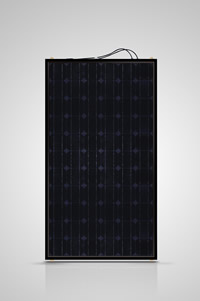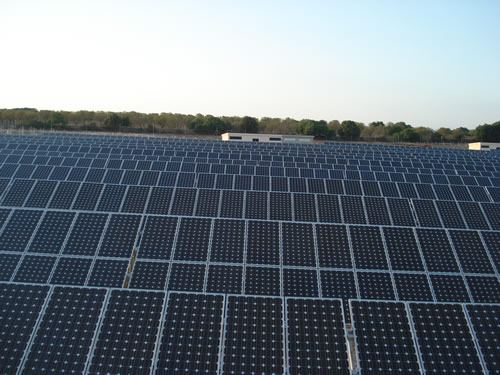With the Volther Solar hybrid collector, production of both electricity and hot water is done simultaneously. In PV modules, as the module temperature increases, the efficiency of the module drops down. In hybrid modules, the module heat is absorbed in order to produce hot water. In this way, PV efficiency is optimized as the heat is transferred into water for hot water production.
AltEnergyMag Interview -Thermal and Hybrid Solar Collectors
Johannes Hoek | Solimpeks Corp
That's right, nowadays, increasing energy needs, exhaustion of conventional energy resources, environmental and ecological issues, clean energy sources especially solar energy increased the awareness. As you already know that the most of the fossil fuels come from volatile regions like the Middle East, Africa etc. so we believe that the next couple of years the oil price will be rising again which will draw more attention to renewable energy especially solar energy which can be solar thermal implementations and electricity generation from solar etc. We should not forget that the sun is source of infinite and it generates more energy than what the world consumes.
2. Your company is currently exporting Solar Thermal and Hybrid Collectors to around 60 countries, what are the key countries/regions you are focusing on?
Thanks to our 18 quality certificates we are able to export to 60 countries such as Germany, England, Spain, Belgium, Sweden etc. Our main focus are the EU countries which comprise 70% of our export.
 3. Please outline what you mean by a Hybrid Solar Collector?
3. Please outline what you mean by a Hybrid Solar Collector? With the Volther Solar hybrid collector, production of both electricity and hot water is done simultaneously. In PV modules, as the module temperature increases, the efficiency of the module drops down. In hybrid modules, the module heat is absorbed in order to produce hot water. In this way, PV efficiency is optimized as the heat is transferred into water for hot water production.
4. In terms of efficiency and return on investment, what makes a Hybrid Collector superior to a conventional Solar Collector?
In test reports we can see 28% PV efficiency and 60-70 C degrees hot water. By courtesy of this combination can reduced the ROI (Return Of Investment) because in every electricity and thermal heating projects should use the PV and Solar thermal but in PV/T projects you can combined solar thermal and solar electricity project.
5. To calculate the return on investment - the life cycle of products are always important. How many years could one use the products you are currently producing?
Our solar thermal products can be used minimum 10 years which is under warranty; the maximum period is over 30 years. For our PVT product can be used minimum 25 years which is under warranty, and maximum over 35 years.
6. Is a hybrid collector system practical for a residential application.
According to calculations and all application of Solimpeks, just 25 m2 of PV/T collector can provide all the energy required by a normal family house in northern Europe throughout the year if surplus electricity is stored in batteries or fuel cells and heat is stored in the ground and recovered in cold weather by a heat pump. Available in two sizes, of 175 W and 750 W ratings, Volther collectors have monocrystalline PV panels and an absorber with copper strip heat exchanger, each unit being housed in an embossed aluminium box with extra solar glass.
7. Have you installed many hybrid systems? Please describe a typical project?
There are 20 to 25 project we completed, these projects generally installed in western Europen countries and Turkey including residential and industrial such as Germany, England, Spain etc.
8. How many years is your company already operating in this field?
Since 1979.
9. And during this period, what was THE most exciting project you were involved?
As for the electricity, in 2008 we made 4 MW power plant project, and thanks to this project we provide electricity needs of a big village in Spain. We achieved the first-in-kind PV/T project in the Antalya which is significant and remarkable step forward for us and also the Turkish renewable energy sector.

Biography
Johannes (Joop) Hoek
Education
: MTS - Energy technology, diploma 1976
: THS Gent - Energy technology, diploma in 1991 (Industrial Engineer in Electro / Mechanics)
Courses : Company Instrumentation Engineer PBNA(HBO level)
: Chemical Technology on HBO level
: Industrial process and production automation (HBO deg.)
: Multiple ISW management training
: Develop and maintain quality and maintenance systems
Experience : The creation and support of change in production. The driving and coaching multiple teams.
: Preparing, developing and implementing new business strategies.
: Develop and maintain quality systems and maintenance systems.
: To decrease of production costs.
: Knowledge transfer to produces new products or better
Company : Technological Consulting Twente 1998- now
Production Chain Targeted Advice
Function : Technical / Marketing Director of SES Responsible Holtkamp
Responsible - Development and production launch of a new solar collector PVT kombi collector
- Advise potential customers on a complete energy system.
- Planning and coordinating projects cq production
: General Manager. MGTwente BV
Moulds and tools production Twente BV
- Develop and implement a reorganization of the company back to health.
- Entering an integrated production system.
- Develop and introduce financial markets strategy
Company : Twentse Modules Group Ltd 1996 -1998
Function : Commercial / Technical Director Responsible:
Responsible : Planning and coordinating projects cq productie
- Shareholders advise on new production methods and technologies
The content & opinions in this article are the author’s and do not necessarily represent the views of AltEnergyMag
Comments (0)
This post does not have any comments. Be the first to leave a comment below.
Featured Product

Nature's Generator MyGrid 10K
A 10,000W plug & play whole-home generator with a 10kWh LiFePO4 battery for reliable backup power. Features easy setup, flexible 120V/208-240V input, and solar/wind charging. Expandable with extra batteries or solar panels, and can pair two units for 20,000W for even larger energy needs. Powers your home during power outages, reduces electricity costs, and supports sustainable energy.
